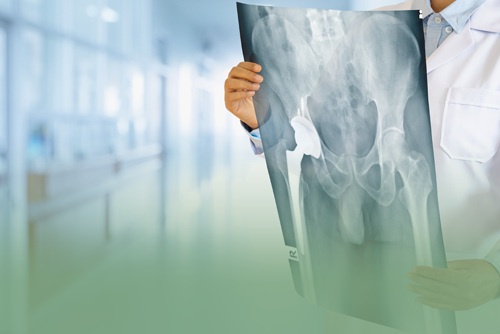A painful hip limits your activity and lifestyle. When wear and tear result in reduced mobility, hip replacement may help.
“When a hip is worn out, surgical intervention can be approached either from the front or the back,” explains Dr. Steve Pennington, orthopedic surgeon.. “An anterior approach refers to going into the hip from the front.”
Anterior Hip Replacement Procedure: A new approach with benefits to you
The posterior approach for hip replacement was common for many years. This technique required cutting through large and small muscles, lengthening recovery time. The healing of these muscles could cause complications with dislocation if post-operative precautions weren’t heeded. “We’re always looking for ways to do a more effective surgery, with a faster recovery, and provide our patients less pain,” shares Dr. Pennington. “Better instruments have been pioneered, allowing this anterior technique to meet some of those goals.”
Patient Benefits from the Anterior Approach to Hip Replacement Surgery
One of the benefits of the anterior approach is that it doesn’t necessitate the cutting of any muscles. They can be moved to the side during surgery, which means patients don’t have to wait for cut gluteus maximus muscles to reknit. Even better, there is less risk of hip dislocation when the anterior approach is used. Worries about disrupting ligaments and muscles that hold the new hip in place while sleeping are eliminated. Additionally, there is better range-of-motion with the new hip from this approach. And, surgeons can correct leg-length differences with this technique.
Some patients can return home the same day as surgery, but many spend one night in the hospital. Dr. Pennington assures, “Within just a few hours of surgery patients can be up, bearing full weight and working on full range of motion.”
Am I a candidate for Anterior Hip Replacement Surgery?
This technique is designed for those who have arthritis in the hip. A worn-out ball-in-socket joint is extremely painful, and those who require arthritis-based hip replacement can realize the many benefits of the anterior approach.
Dr. Pennington adds that patients with a body mass index (BMI) of 35 or higher are not ideal candidates for an anterior procedure. “If a patient’s midsection hangs over a little too far, that can cause some wound problems post-surgery,” he informs. If overweight or obese patients are able to reduce their weight prior to surgery, candidacy would be reevaluated. Ultimately, the anterior approach reduces recovery time and improves patient outcomes, aligning with the mission of Pullman's orthopedic department. “We really try to be a full-service orthopedic entity here at Pullman. We’re constantly updating our service offerings, and I think the anterior approach is the wave of the future.”
